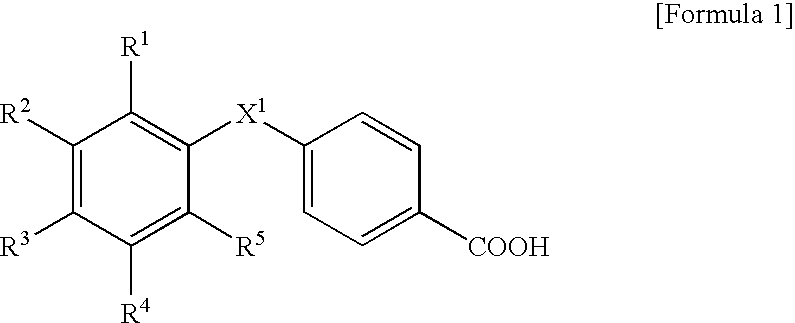Memory consolidation promoting agent and method of use
a memory consolidation and promoter technology, applied in the field of medicine, can solve the problems that patients often cannot memorize experiences, i.e., and achieve the effect of superior action for memory consolidation
- Summary
- Abstract
- Description
- Claims
- Application Information
AI Technical Summary
Benefits of technology
Problems solved by technology
Method used
Image
Examples
example 1
[0029]6-Week old Slc:Wistar male rats were used for the experiment after preliminary breeding including one week of quarantine. The animals were individually bred under an environment at a temperature of 22±3° C. and a humidity of 50±20% with illumination of 12 hours (8:00 to 20:00) for both the preliminary breeding and experimental periods, and the animals were given pellets (Labo M R Stock, Nihon Nosan Kogyo K. K.) and tap water ad libitum. The animals were divided into groups according to body weights as an index (10 animals / group), and trials for acquisition and reproduction of memory were performed. Each trial was performed by using a shuttle type avoidance test box. The box had a light room on one side and a darkroom on the other side, an opening-and-closing type partition was provided between the two rooms, and the box was designed so that only the dark room was electrifiable. Each animal was put into the light room, time until the animal moved to the dark room (latent time) ...
example 2
[0032]A test was performed in the same manner as that of Example 1, except that scopolamine was given at a dose of 0.25 mg / kg or 0.5 mg / kg, and 2 mg / kg, 5 mg / kg or 12.5 mg / kg of Am80, 30 mg / kg of Tac101 (4-[(3,5-bis-trimethylsilylphenyl)-carboxamido]benzoic acid), and 10 mg / kg of HX630 (4-[2,3-(2,5-dimethyl-2,5-hexano)dibenzo[b,f][1,4]thiazepin-11-yl]benzoic acid) were given. Combinatory use of Am80 (5 mg / kg) and HX630 (10 mg / kg) was also similarly examined. Drug treatment was performed from the 2nd day. In the same manner as the results of Example 1, the latent time was gradually extended in the Am80, Tac101, HX630-treated groups and the Am80 and HX630 combined use group compared with the control group.
[0033]
TABLE 2Dose (mg / kg / day)AmTacHXReaction latency (second)SCP801016301a)23450.5———13 ±18 ±17 ±23 ± 33 ± 2 3 2 3 10.25———10 ±15 ±15 ±30 ± 42 ± 2 2 4 6 50.52——14 ± 9 ±23 ±24 ± 38 ± 5 1 3 3 30.55——19 ±18 ±38 ±52 ± 71 ± 4 2 6 5 40.512.5——15 ±24 ±43 ±74 ±133 ± 4 210 3 120.255——14 ±15 ±...
example 3
[0034]In the same manner as that of Example 2, scopolamine was given at a dose of 0.25 mg / kg, and 10 mg / kg of 4-[5-(4,7-dimethylbenzofuran-2-yl)pyrrol-2-yl]benzoic acid (IT-K-1001) was orally given. The results are shown in Table 3. This compound markedly inhibited the effect of scopolamine.
[0035]
TABLE 3Dose(mg / kg / day)IT-K-Reaction latency (second)SCP10011a2345678——16 ±134 ±152 ±201 ±300 ±292 ±300 ±300 ± 4 50 41 24 0 8 0 00.25—27 ± 28 ± 31 ± 43 ± 47 ± 49 ± 58 ± 73 ± 3 8 6 11 7 8 7 50.251022 ± 11 ±106 ±115 ±206 ±291 ±300 ±281 ± 4 2 43 41 46 9 0 19a)Lapsed days (day)Averages are indicated in the upper row, and standard errors are indicated in the lower row for each group.SCP: Scopolamine
Industrial Applicability
[0036]The medicament of the present invention has a superior action for memory consolidation, and is useful as, for example, a medicament for prophylactic and / or therapeutic treatment of dysfunction of memory consolidation associated with neurodegenerative diseases such as Alzhe...
PUM
| Property | Measurement | Unit |
|---|---|---|
| humidity | aaaaa | aaaaa |
| temperature | aaaaa | aaaaa |
| ring structure | aaaaa | aaaaa |
Abstract
Description
Claims
Application Information
 Login to View More
Login to View More - R&D
- Intellectual Property
- Life Sciences
- Materials
- Tech Scout
- Unparalleled Data Quality
- Higher Quality Content
- 60% Fewer Hallucinations
Browse by: Latest US Patents, China's latest patents, Technical Efficacy Thesaurus, Application Domain, Technology Topic, Popular Technical Reports.
© 2025 PatSnap. All rights reserved.Legal|Privacy policy|Modern Slavery Act Transparency Statement|Sitemap|About US| Contact US: help@patsnap.com

